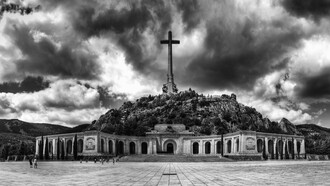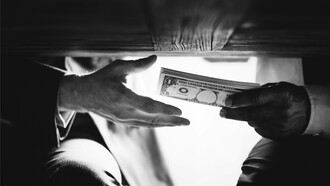Our history on this planet has been both fraught with turmoil and abundant in its delights. It is a worthwhile question to ask, are we our own worst enemy, will we ourselves be our undoing? When observing the historic foundations of war we see tribes and nations turn on one another for what they believe in, willing to fight and risk death so their own worldview can withstand adversity in the annals of history. One could take the Marxist viewpoint that “the end justifies the means” and that war of itself is a sacrifice vital to any cause, one could also speculate that war is in our human nature. Stubborn leaders who crave to impose their nation’s ideals on other nations have cost many working-class lives throughout history. It is a savage man that refuses to listen and screams without end, it is an artistic man with the ears to listen who questions others to better understand what brings them joy and celebrates the similarities they share while negotiating their differences. Continued war anywhere is a threat to all life everywhere.
Take the eagle, this creature has no conscious understanding of what a nuclear warhead or a M.O.A.B (mother of all bombs) is, yet the eagle has been depicted by both the Americans and the Nazis to express nationalist ideals.
Art allows for differing perspectives and often encourages it, war does not. Two extremes we have manifested in our world, often during war we observe art being looted or destroyed. Art is a fluid concept impervious to one concrete definition, to duct tape a banana to a wall at the Miami Art Basel and give it the title ‘comedian,’ that is decidedly enough for us to call a thing art. This debate of whether human beings are savages or artists or both has less to do with critics tearing down artworks and much more to do with ordinary citizens tearing down literal artworks they feel compelled to revolt against. In 2020 statues which memorialized figures tied to racist a racist or objectionable past were toppled and degraded with graffiti, this revolt occurred not only in the United States of America but also in Britain and Belgium. As the west toppled statues Russia considered its own past more deeply, gazed at their own monuments with new eyes.
This is not to say that the art is always bad and the people are always good. We look back to 2017 when the terrorist group ISIS was destroying ancient works of art because they objected to the Iraqi people having access to that preserved expression of their own history. According to UNESCO the destruction of cultural heritage is a war crime, an official acknowledgement that it is bad to hate the expression of a group of human beings trying, through art, to better understand and enjoy who they are deep in their soul. Art can be used to express beauty and suffering in all its forms, in recent years protestors for the climate change activism group, Extinction Rebellion, glued their hands and heads to Andy Warhol’s iconic painting of Campbell’s soup cans and other iconic works of art around the world. I had even personally attended an exhibition of Picasso classics at the NGV in Melbourne only a week before someone disrupted that exhibition and had the place shut down for a trivial couple of hours. The Warhol artwork offers an easy segway to further Extinction Rebellion acts in which soup was thrown at Van Gough’s painting ‘Sunflowers.’ If our own human acts and history, the future, our canvas, human life can be considered a work of divine art or nature’s way of expressing itself on Earth, we are both savage and artful in our ways.
There is a crossroads where enlightenment balances differing ideals and our definition of human nature, how we define what comes naturally across all cultures in mankind. It is at this crossroads that we must accept that while early human beings, neanderthals, were not only savages but artists. National Geographic explains that early man mixed their own pigments to create paint in order to decorate caves and perforated shell beads which date back at least 115,000 years. In Cueva de los Aviones in southern Spain, there is evidence that at our most undeveloped and base selves, art was important to us. A freedom of expression and method of communicating our souls was a priority and a means of documenting our Earthly observings.
In our ceaseless quest to determine what is most human, it cannot be ignored or taken for granted that human beings are unable to communicate certain feelings in words. For this same reason politicians are often talking and rarely expressing. Is the act of war an expression? The aggressive and ever bloody avoidance of a potential utopia across cultures, war, is at best described as a way of preserving our differences to our own detriment. A psychologist I seek counsel from every now and then asked me a profound question which I cannot seem to shake. I would confess to him that at times I would stay up all night and after I could not keep my eyes open any longer I would fall asleep fully clothed, if I was hungry I would eat a meal cold out of the fridge instead of heating it. The question he asked was this, “are you subconsciously depriving yourself of joy, do you feel you do not deserve joy?” I ask this same question when two nations defend their differences and neglect to find common ground, preserving the past and stifling discernable progress toward a peaceful unification of our cultures in our lifetime.
The human race has a very hard time accepting its own flaws, it seems that everything must be talked about in perpetual tedium until the time comes to learn our lesson the hard way and then make art about how hard it was, then with time we are in disbelief we were ever so horrible and so we hurt our own artistic expression of how horrible we were. The walls we build, the wars we fight and the lines we draw, the guns we fire and the bombs we drop in order to affect the preservation of a supposed identity, exclusively maintained by each flag, make the idea of coexistence all the more elusive.














